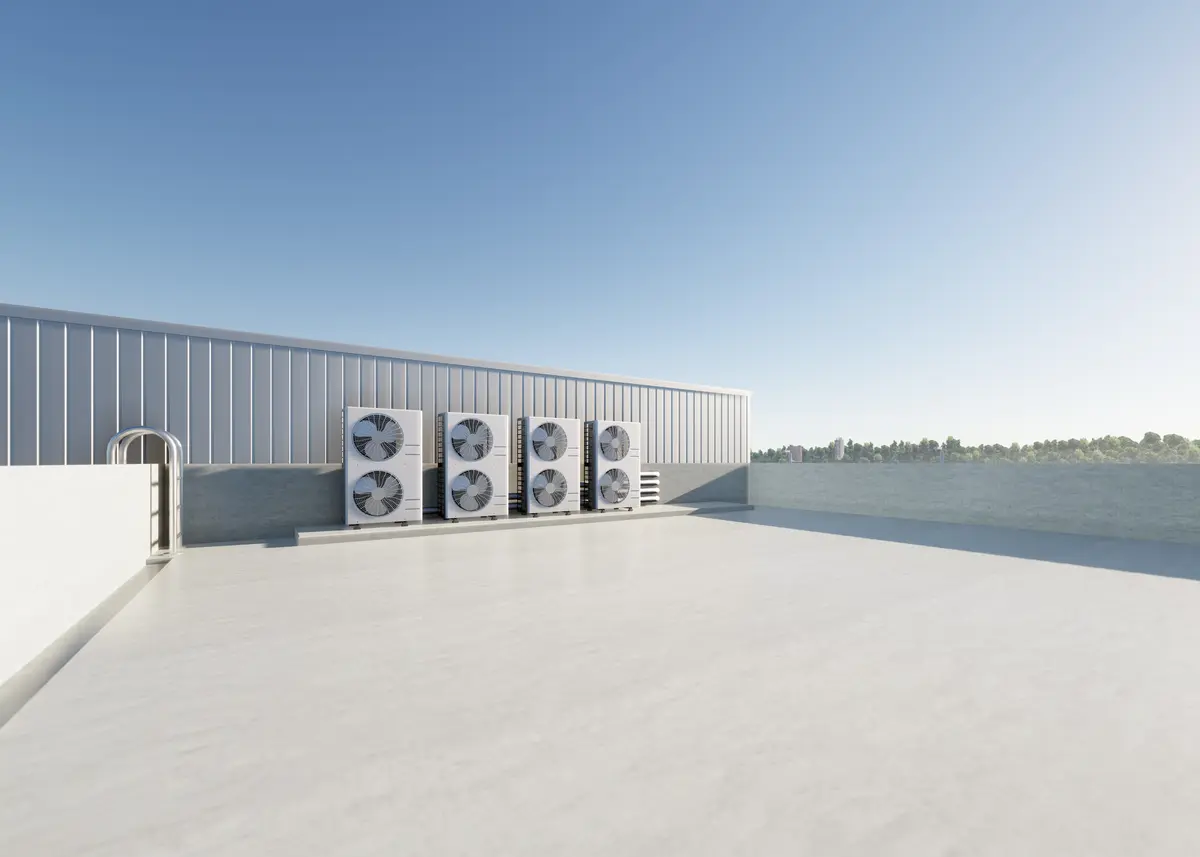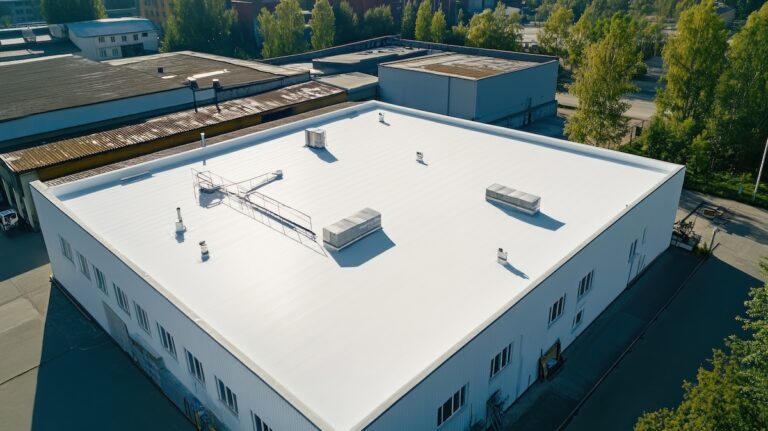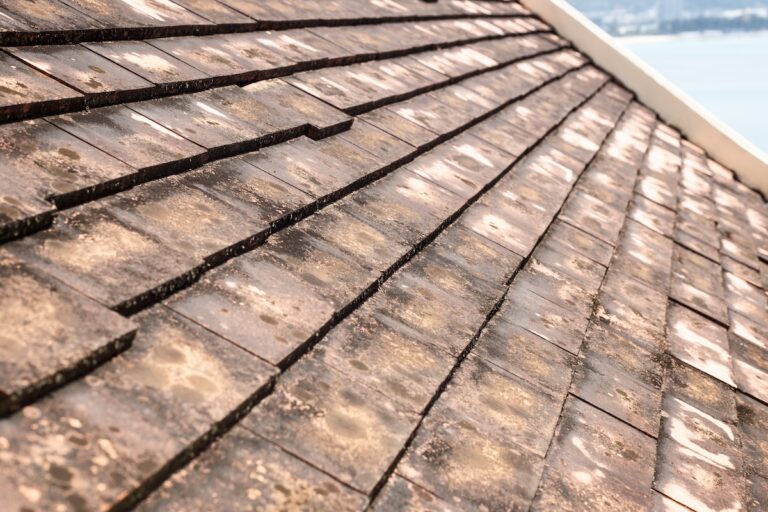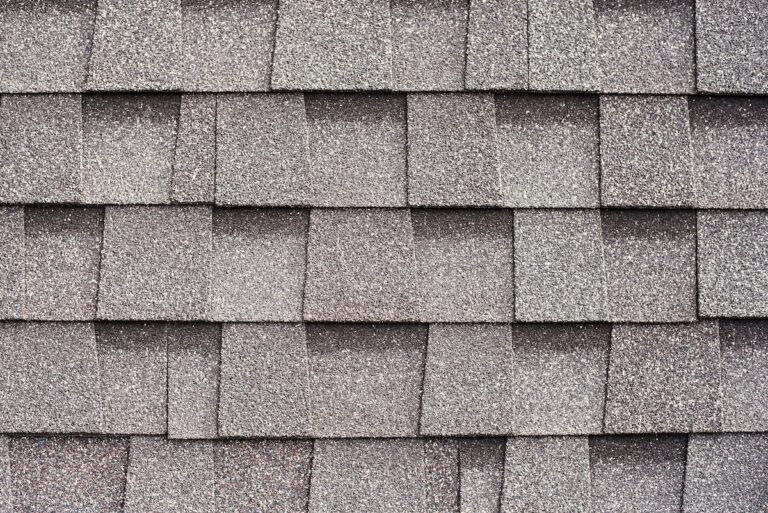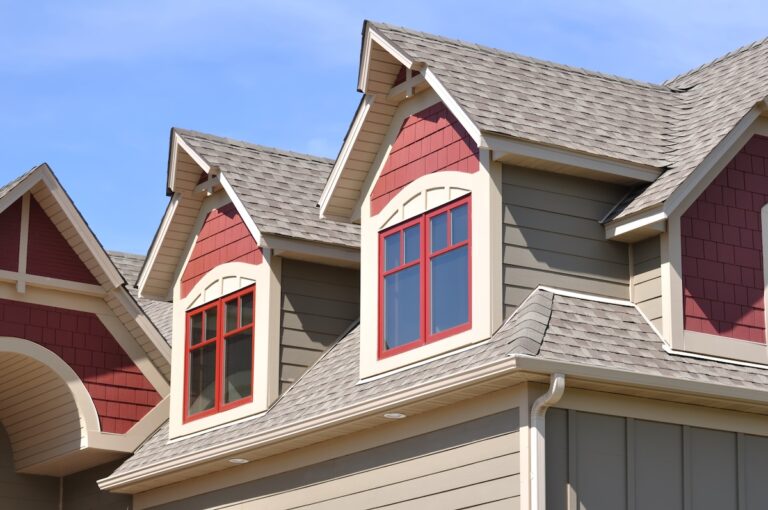When you’re managing a commercial property or running a business, the last thing you need is an unexpected disruption. Yet, the roof over your head is one component that can silently deteriorate until it demands urgent attention.
Knowing when and how to replace a commercial roof is crucial for maintaining the integrity and value of your property. This blog post will walk you through everything you need to know about commercial roof replacement, going over:
- Identifying signs of damage
- Selecting materials
- Understanding the intricacies involved in the process
Understanding the Importance of Commercial Roof Replacement
Why Is a Strong Roof Important?
A commercial roof serves as the first line of defense against weather extremes, be it heavy rains, scorching sun, or icy conditions. A robust roof protects not only the structural integrity of the building but also the contents within, including valuable equipment, inventory, and the people who work there. A compromised roof can result in leaks, energy inefficiency, and even safety hazards.
The Cost of Neglect
Neglecting roof maintenance can lead to escalating costs. Small leaks can turn into significant water damage, affecting not just the roof but also the building’s interior, electrical systems, and mold can become a concern. Such issues not only require costly repairs but can also interrupt business operations, potentially resulting in lost revenue.
Signs It’s Time for a Commercial Roof Replacement
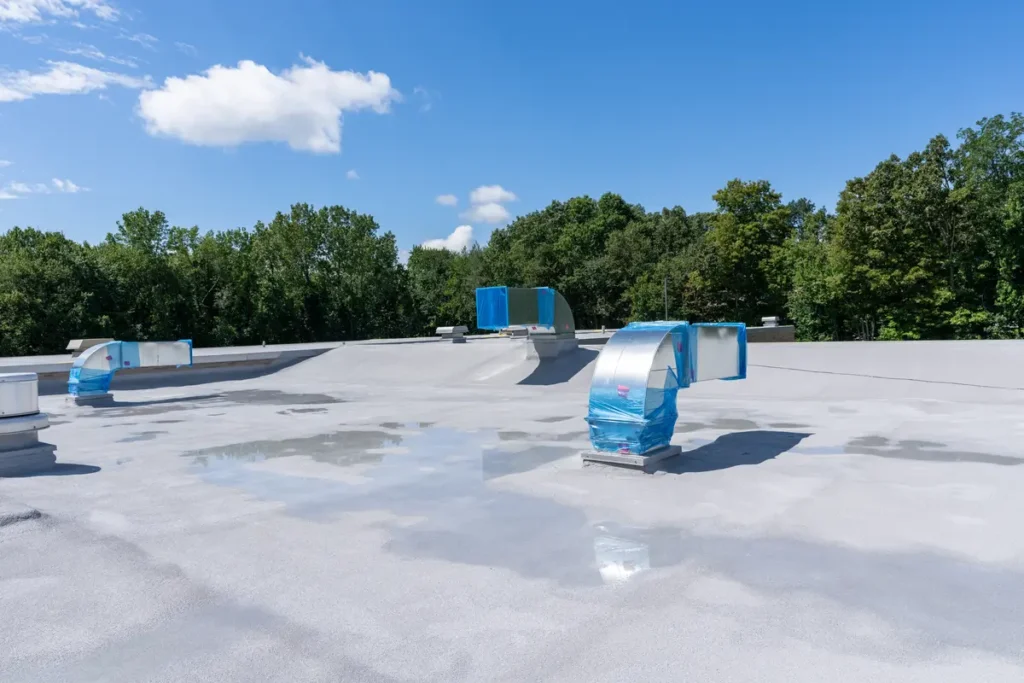
Identifying the signs that indicate a need for commercial roof replacement is crucial in preventing extensive damage and avoiding costly repairs. While some indicators might be obvious, others may be more subtle, requiring a keen eye and regular inspections. Recognizing these signs early can help you address the issue before it affects your building’s functionality and safety. In this section, we’ll explore the key warning signs every property manager should be aware of, ensuring you can take timely action to safeguard your investment.
👴🏼 Age of the Roof
One of the most straightforward indicators is the age of the roof. Most commercial roofs have a life expectancy ranging between 15 to 30 years, depending on the materials used. If your roof is nearing or has exceeded this timeframe, it’s time to consider a replacement.
🏚️ Visible Damage
- Cracks and Tears: Check for visible cracks or tears in the roofing material.
- Blistering and Bubbling: These can indicate trapped moisture and are common with asphalt roofing.
- Sagging: Any sagging or uneven areas should be inspected immediately.
💧 Leaks and Water Damage
Frequent leaks are a sure sign that a roof replacement might be necessary. Water stains on ceilings, walls, or floors can indicate that the roof is no longer serving its purpose effectively.
📈 Increasing Energy Bills
An aging roof can compromise your building’s insulation, leading to higher energy costs. If you notice a spike in energy bills, it might be due to a roof that needs replacing.
Choosing the Right Roofing Material
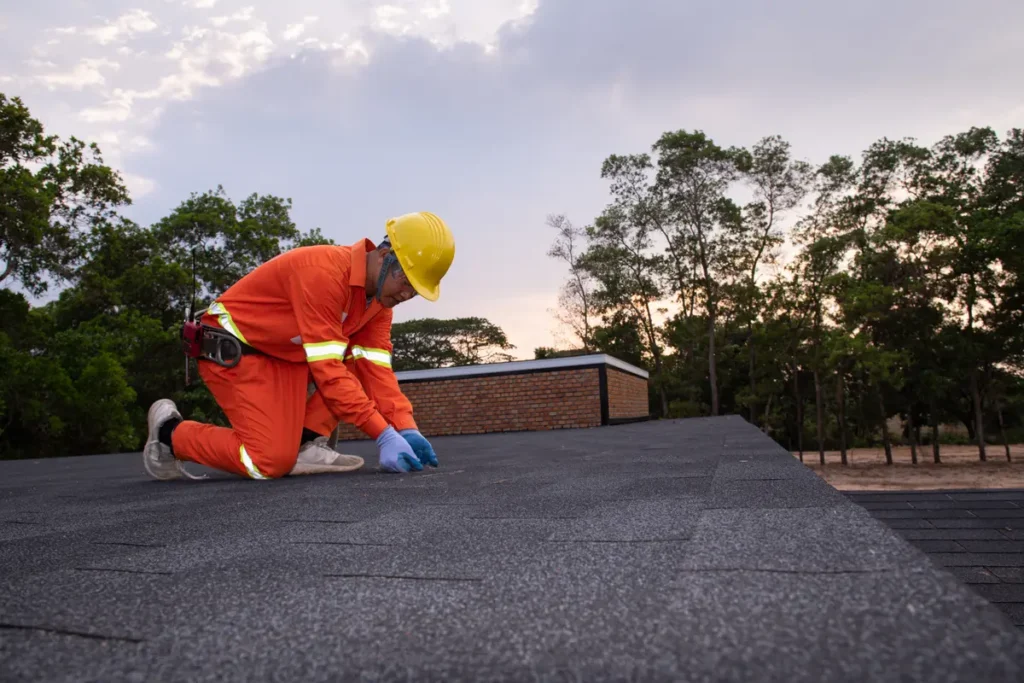
Selecting the right material for your new roof is a decision that impacts your building’s durability, energy efficiency, and aesthetics. Here are some common options:
Built-Up Roofing (BUR)
Built-up roofing (BUR) is a traditional choice for commercial roofs that offers durability and strength.
- Pros: Durable and UV-resistant, providing excellent waterproofing.
- Cons: Heavy and requires additional structural support.
Modified Bitumen
Modified bitumen roofing is another popular choice for commercial buildings, known for its flexibility and ease of installation. This material is manufactured in sheets and can be applied in various ways, including hot or cold adhesive, torch, or self-adhered systems.
- Pros: Flexible, easy to install, and provides good insulation.
- Cons: Can be prone to punctures and tears.
Thermoplastic Olefin (TPO)
Thermoplastic Olefin (TPO) roofing is a modern solution that combines durability and energy efficiency, making it an attractive choice for commercial properties. Its reflective surface helps reduce energy costs by deflecting heat, while its strength and resistance to environmental factors ensure long-lasting protection. In this section, we will delve into the benefits and potential drawbacks of TPO roofing, providing you with the necessary insights to determine if this material aligns with your building’s needs.
- Pros: Lightweight, resistant to UV and chemical exposure, and energy-efficient.
- Cons: Can shrink over time, requiring maintenance.
Ethylene Propylene Diene Monomer (EPDM)
Ethylene Propylene Diene Monomer (EPDM) roofing is a versatile and widely used option, known for its durability and weather resistance.
- Pros: Excellent durability and weather resistance.
- Cons: Prone to punctures and not as aesthetically versatile.
Metal Roofing
Metal roofing is an increasingly popular choice for commercial buildings, favored for its longevity and sleek appearance. Offering exceptional durability and low maintenance requirements, metal roofing effectively withstands harsh weather conditions. In this section, we’ll explore the key benefits and considerations of opting for metal roofing, helping you determine if it suits your building’s specific needs.
- Pros: Long-lasting, recyclable, and fire-resistant.
- Cons: Higher upfront cost and potential for corrosion.
Planning Your Roof Replacement Project
Embarking on a commercial roof replacement project is a significant undertaking that requires careful planning and execution. This section will guide you through the essential steps to ensure a successful project, from selecting the right contractors to navigating the timeline and budget. By understanding each phase of the process, you can make informed decisions that protect your building and its occupants while maximizing your investment in a new roof.
Setting a Budget
A commercial roof replacement is a significant investment. Establish a clear budget that includes costs for materials, labor, permits, and unexpected contingencies.
Hiring a Contractor
Choosing the right contractor can make or break your project. Look for the following:
- Experience: Ensure the contractor has experience with commercial roof replacements.
- References: Request references or reviews from previous clients.
- Insurance: Verify that they have adequate insurance coverage.
- Warranties: Understand the warranties offered for both materials and workmanship.
Permits and Regulations
Ensure compliance with local building codes and obtain the necessary permits before commencing work. This step is crucial to avoid legal issues and fines.
The Roof Replacement Process
- Inspection and Assessment: A thorough inspection identifies specific needs and potential challenges.
- Removal of Old Roof: Careful removal ensures no damage to the building’s structure.
- Repairing the Substrate: Address any issues with the base layer to ensure a solid foundation.
- Installation of New Roofing System: Choose the material that suits your needs and follow best practices for installation.
- Final Inspection and Clean-Up: Ensure that the new roof meets all standards and that the site is left clean and safe.
Maintaining Your New Roof: 3 Key Tips
Proper maintenance of your new roof is crucial to ensure its longevity and performance. Regular inspections, timely repairs, and preventive measures can help you get the most out of your investment, safeguarding your building from potential damage and reducing long-term costs. This section will cover essential maintenance practices and tips to keep your roof in optimal condition for years to come.
1) Scheduled Inspections
Regular inspections help identify and address minor issues before they escalate. Ideally, have your roof inspected twice a year and after major weather events.
2) Prompt Repairs
Address any minor damages promptly to prevent them from turning into major problems.
3) Gutter Maintenance
Keeping gutters clean ensures efficient water drainage, preventing leaks and water damage.
Let Us Set Your Up With A New Commercial Roof
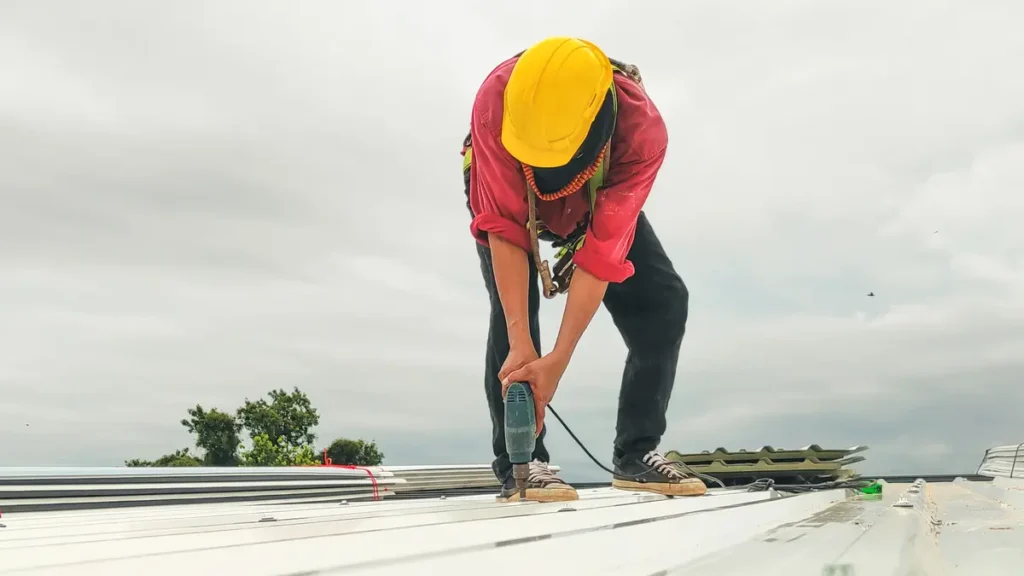
Investing in a commercial roof replacement is a long-term commitment to your property’s safety, efficiency, and value. By understanding the signs of wear, selecting the appropriate materials, and planning meticulously, you can ensure that the process is smooth and successful.
For those ready to take the next step, consider consulting with G. Cannon Roofing to explore your options. This can lead you to solutions that not only protect but enhance your commercial property.
